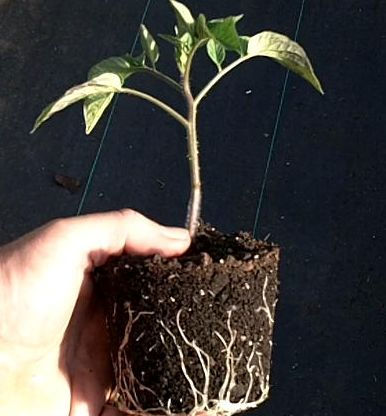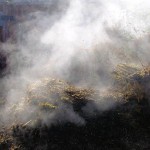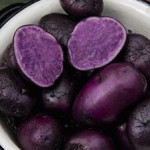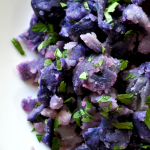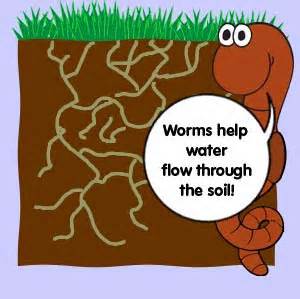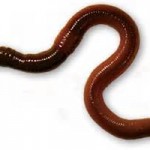| “Nutritious and good quality food and animal fodder can only be produced if our soils are healthy, living soils.” FAO Food and Agriculture Organization of the United Nations |
| I have been getting paid for gardening advice for over 40 years now and gardening even longer. I have seen plants grow bigger and be more productive than I ever thought possible, and talked to thousands of gardeners about their problems. One thing I learned very early — and relearn every year is this. A new or poor gardener puts a $1 plant in a 50¢ hole A good gardener puts a $1 plant in a $2 hole A great gardener puts a $1 plant in a $10 hole And the better the hole (soil), the fewer holes you have to dig I don’t suggest wasting money on things like peat moss (environmental problems) and bagged manure products (which are not really manure) or bagged, dead compost products (which are not really compost). But if done properly, the $10 hole ends up being the most cost effective because it is mostly a single upfront price with very few maintenance costs. It is even a better deal if you factor in your labor — every year for more than a decade. Do a great job with soil prep. Spend your money up front — and then — DO NOT DISTURB. There is nothing you can do to help great soil except to feed it with soil building fertilizers, keep a good mulch on it and keep something growing in it as much as possible. Any tilling or digging destroys the work done during the previous year to improve the soil. And — the more you learn, the less you spend. For example, if you saved some shredded leaves from last fall, you wouldn’t need to buy mulch this year. |
 |
| These tomatoes weigh about 2 ounces — or 8 to a lb. At $3.99/lb, the harvest just about pays for the cost the first year. |
| Out of the bag — or a decade later — our living soil works great. Talk about cost effective growing. This plant is growing in a container we filled with our potting soil 12 years before this picture was taken — same pot, same soil, no tilling or disturbing the soil at all — just dig a small hole, plant in the spring, and get results like this for over a decade. And these aren’t just any tomatoes. Studies show plants grown in biologically rich soils like this also produce the best tasting and most nutritious crops. These are just some of the benefits of high quality, living soil. You cannot overstate the effect soil life has on plant growth, health, productivity, flavor and nutritional value of crops, and our health. They are all linked together.” A healthy soil is a living, dynamic ecosystem, teeming with microscopic and larger organisms that perform many vital functions including converting dead and decaying matter as well as minerals to plant nutrients (nutrient cycling); controlling plant disease, insect and weed pests; improving soil structure with positive effects for soil water and nutrient holding capacity, and ultimately improving crop production. A healthy soil also contributes to mitigating climate change by maintaining or increasing its carbon content. “Healthy soils produce healthy crops that in turn nourish people and animals… Nutritious and good quality food and animal fodder can only be produced if our soils are healthy living soils.” FAO Food and Agriculture Organization of the United Nations |
 |
| The Best Soil The soil structure shown below is generally recognized as the best to grow most plants. It is called granular ped soil. These small particles are ideal for best supporting plant health. You cannot make this kind of soil, and you cannot buy it. You can only provide the proper materials and environment to support soil biology so they can make it. You will need to use a fertilizer that helps the soil and a beneficial mulch like clean straw or shredded leaves. If you have this soil and you dig it up or move it, the soil biology needs to start over again because each particle is custom made for each spot. These particles are almost all smaller than a rice hull. A couple rice hulls are in the pic for particle size comparison. |
 |
| The single small particle (ped) below is magnified many times. It is smaller than a single grain of rice. You can see it is a compound structure with tiny little nooks and crannies that make homes for entire microbial communities. This structure is an ideal home and workplace for soil microbes. In healthy soil, there are 1 billion microbes per teaspoon of soil working on helping plants grow — or — 1 million microbes per 1/1000 teaspoon of soil. A particle smaller than this dash – which is the size of the particle enlarged below can be the home and workplace for over 1 million microbes |
 |
| Think about a product you get with “some assembly required”. You may have all the pieces in a box, but unless they are in their proper places it doesn’t work. And when you disassemble it, you have to correctly put it back together again. It only works when all the pieces are assembled properly. The soil life makes soil particles one at a time — each one custom made for the spot it is in. A microscopic community of over a million creatures lives and works on every tiny particle. Tunnels made by worms, beetles and other creatures allow movement of a range of products. Pipelines in the form of mycorrhizal fungus serve to feed every tiny soil particle and return nutrients extracted from the soil back to nourish the plants. If water runs too fast past a microbial community in one area, soil workers will adjust the drainage in that area to slow things down — or increase drainage if needed. By the time the water slowly percolates through this soil every creature and every root gets a drink, and every water retention vessel is filled. This soil structure is ideal for capturing, cleaning, and retaining water. Each of these peds is a also a warehouse for plant nutrients. What happens when you run a tiller through this, or even dig it with a shovel? First a lot of carbon is lost to the air from the decaying bodies of the soil life killed, and then an enormous amount of repair work needs to be done before it starts to function properly again. Below is a closeup of our fresh soil. Although it works great the first year, it provides the starter ingredients needed for even better soil — and for many years to come. Our soil is a combination of different high carbon substances to feed soil organisms until plants grow enough to produce carbon exudates in larger quantities. We also add some of our compost (the black pieces) to introduce soil life. New soil needs to be more highly aerated because it lacks purposefully built tunnels that provide air and drainage that are present in more biologically developed soil. Water runs through fresh soil more quickly. It has to because you need more aeration and better drainage until the structure is more developed. As the biology builds better structure, more nutrients and more water are held in the soil along with better drainage. |
 |
| The pic below is the soil from a potted plant the we planted about 6 months ago. It shows the soil in an intermediate step between fresh soil and fully formed granular ped soil. You can see evidence of tunneling that keeps the soil well aerated and well drained. You can also see the persistence of the rice hulls that are still supplying carbs to microbes. These pics are actually showing carbon being fixed in the soil. This is carbon sequestration — the only practical way of safely removing large amounts of CO2 from the air — while also gaining important nutritional benefits and improving food quality. The short term carbon from the soil organic particles like rice hulls and bark in the pic above is being converted into mineralized carbon that can be kept in the soil for thousands of years. Not all soil carbon is the same — short term carbon can be quickly oxidized and escape as CO2 — if — the biology doesn’t fix it in the soil before it oxidizes. This process also fixes other nutrients so, for example, there is more nitrogen held in the fixed soil than was contained in the original organic pieces incorporated in the soil — but in a less available form. |
 |
| |
 Our fresh soil with a lot of short term carbon, fresh compost, and mineral nutrients. Our fresh soil with a lot of short term carbon, fresh compost, and mineral nutrients. |  Carbon fixation (sequestration)occurring. The soil particles are being broken apart and rebuilt. At this point they are still very small. Carbon fixation (sequestration)occurring. The soil particles are being broken apart and rebuilt. At this point they are still very small. |  Fully formed granular soil ped structure with carbon, nitrogen and other nutrients fixed in long term storage. Microbes can unlock these nutrients if needed, but they also can remain intact for thousands of years. Fully formed granular soil ped structure with carbon, nitrogen and other nutrients fixed in long term storage. Microbes can unlock these nutrients if needed, but they also can remain intact for thousands of years. |
| Growing plants use nutrients from decaying organic matter in the soil first — prioritizing using these recycled nutrients before they leach out of the soil or oxidize. If needed, the mineralized nutrients can also be tapped into. This is similar to having a savings and checking account, where you would first use checking account funds but always have the savings account in reserve. |
| We till our soil only once — while we are making it. Tilling is the best way to mix the different amendments and microbes (from our compost) closely together. With microscopic creatures doing a lot of the work, the better you mix the amendments, the faster they can spread and get to work. After that, we leave our soil alone. When we plant, we are careful to dig a hole no bigger than the size of the pot the transplant is in so we disturb the soil as little as possible. Our amendments vary depending on the quality of the soil — and the quality of the amendments. We use rice hulls, bark mulches, leaves (shredded are better), leaf humus, leaf mold, and compost. Leaf humus supplies some microbes and carbon, but mainly humus. We also mix in some insoluble organic amendments like rock powders, organic alfalfa, or kelp to improve trace mineral content. Starter soil should be well drained, highly aerated, and carbon rich (but not too much carbon). The magic, and most important ingredient in living soil is the quality of the compost. Since microbial diversity is so important, and compost is the microbial inoculant, compost quality is much more important than quantity of compost used. If you have a great soil mix, microbes spread through it very rapidly. Low quality soil resists the microbial spread and it may take several years to get desired results. Lower quality compost also means less microbial diversity. We recommend using relatively small amounts of our compost — working 1/4 inch or so into the top 3-4 inches of soil. There is something to be said for large scale composting to reduce food wastes. It can be a good source of humus. We recommend leaf humus from the Westlake/Bay Village leaf pickup program. It is an inexpensive ($10/cu yard) and high quality humus source. But if you want to produce higher quality food, healthier plants, and make the best use of fertilizer, compost made from the most nutrient rich products produces the highest quality compost. Ours is primarily made from our organic salad mix waste, and other nutrient rich organic veggies. When the compost ingredients are nutrient rich and diverse, the microbes growing in it are also diverse. This is really important because your plants need all of these microbes to obtain all the nutrients that plants need from the soil. We do not take materials from anyone to insure quality– no junk foods for our compost pile. Switching to organic growing can take several years for soils to become very productive. This slow improvement is necessary for farmers who cannot amend many acres due to cost constraints — and are limited to compost tea. On a small backyard garden scale, or in containers, you can get great results immediately. Container shapes, sizes and materials also play a big factor in microbial growth. We like our fiber pots because they improve conditions for microbes — better aeration and drainage. They are relatively inexpensive and they last a long time. Beware of cheap knockoffs that are not UV protected. We have had some fall apart after a few years and that negates one of the best benefits — leaving the soil undisturbed. |

